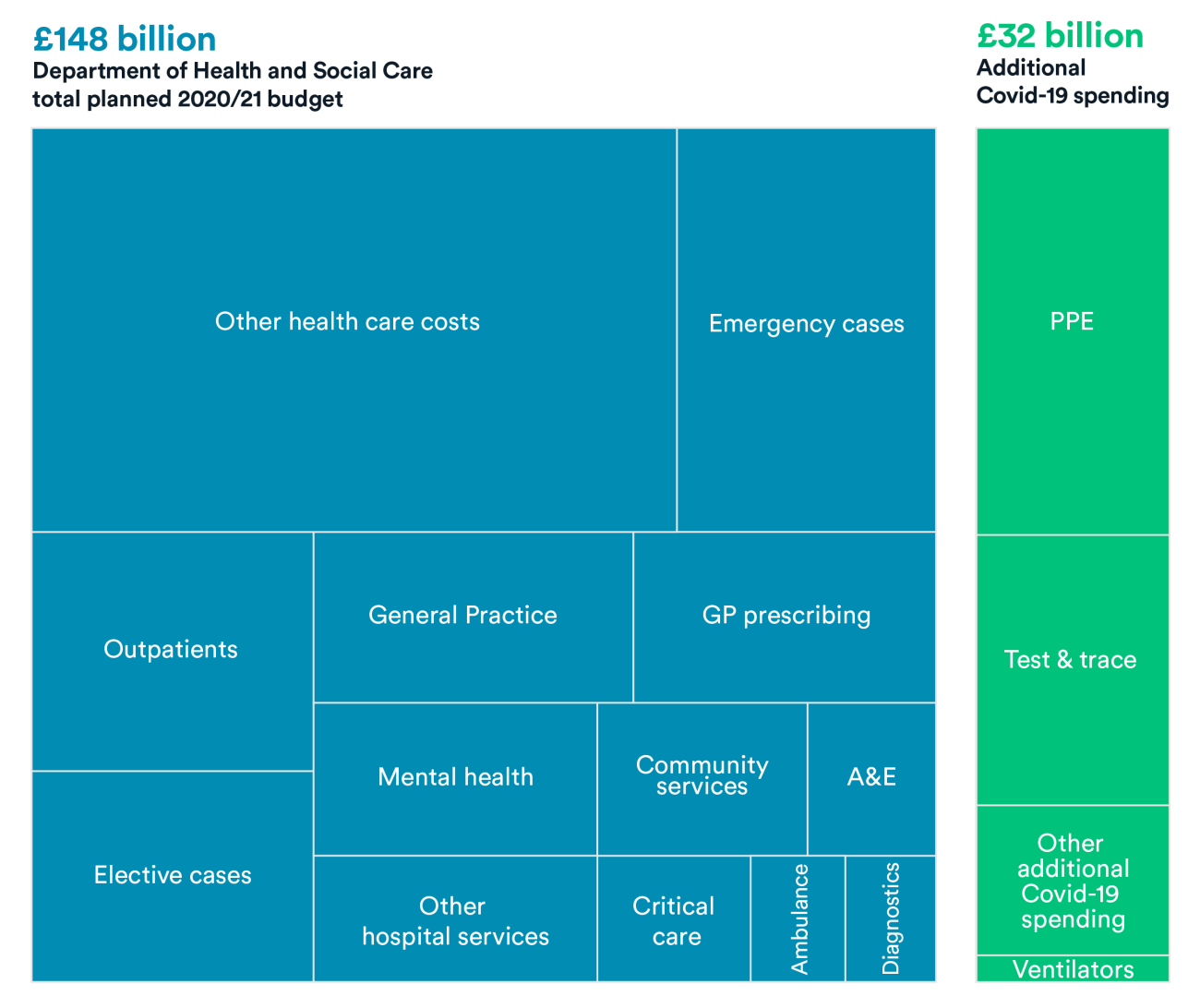Responding to the pandemic has required an unprecedented response from the NHS. This has come at a huge cost: HM Treasury has already approved £31.9bn of support for the health service.
This additional spending covers over £15bn to buy personal protective equipment (PPE); around £10bn for the ‘Test, Trace, Contain and Enable’ programme and £1bn on additional ventilators. In addition, around £5.5bn has been allocated for additional health service spending on, for example, buying care from the private sector and funding for domestic vaccines research and manufacturing.
This week’s chart provides some perspective on these large spending figures.
Overall, compared to this year’s planned total budget for the Department of Health and Social Care, extra spending on PPE, ventilators and other costs so far represents over a fifth of the DHSC’s planned spend of £148 billion.
And based on how its 2018/19 budget was spent, the extra direct spending on Covid-19 is broadly equivalent to the total annual spending on all outpatient, diagnostic, accident and emergency, critical care, and mental health services combined. Spending on PPE alone is similar to the total annual spend on general practice, accident and emergency, and ambulance services combined. Spending on Test and Trace is similar to the total cost of all GP prescribing.
But the Covid-related costs come at a time of unique demand, global competition over supply, and genuine urgency. This – coupled with the fact that we are not even halfway through the financial year – means it is not possible to draw clear conclusions on the value-for-money of the spending that has been approved by the Treasury.
It remains to be seen what the eventual direct health and care service costs of Covid-19 will be. While the cost effectiveness of Covid-related spending also remains to be reckoned, the costs of inaction – to health and care services, the health of the population and the economy – would of course have been truly enormous.
Notes on data and sources
- GP spending: https://digital.nhs.uk/data-and-information/publications/statistical/nhs-payments-to-general-practice/england-2018-19
- Prescribing costs: https://digital.nhs.uk/data-and-information/publications/statistical/prescribing-costs-in-hospitals-and-the-community/2018-2019
- NHS reference costs: https://improvement.nhs.uk/resources/national-cost-collection/
- DHSC 2020/21 budget: https://www.gov.uk/government/publications/budget-2020-documents/budget-2020#budget-report
- PPE includes only nationally procured items. Breakdown of the 2020/21 DHSC total planned budget (£148 billion) are estimates based on spending in 2018/19 uprated in proportion to the growth in overall DHSC budget between 2018/19 and 2020/21.


